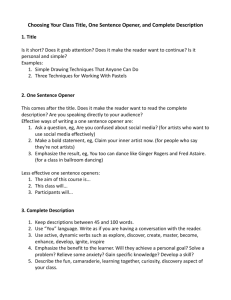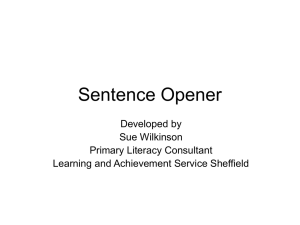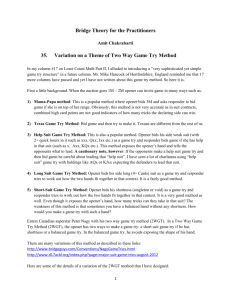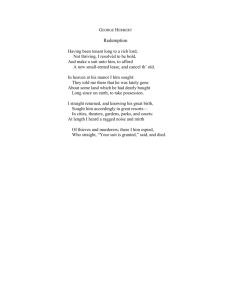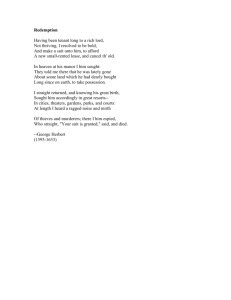Miles Reponses to a Strong Two Club Opening Overview of Systems
advertisement
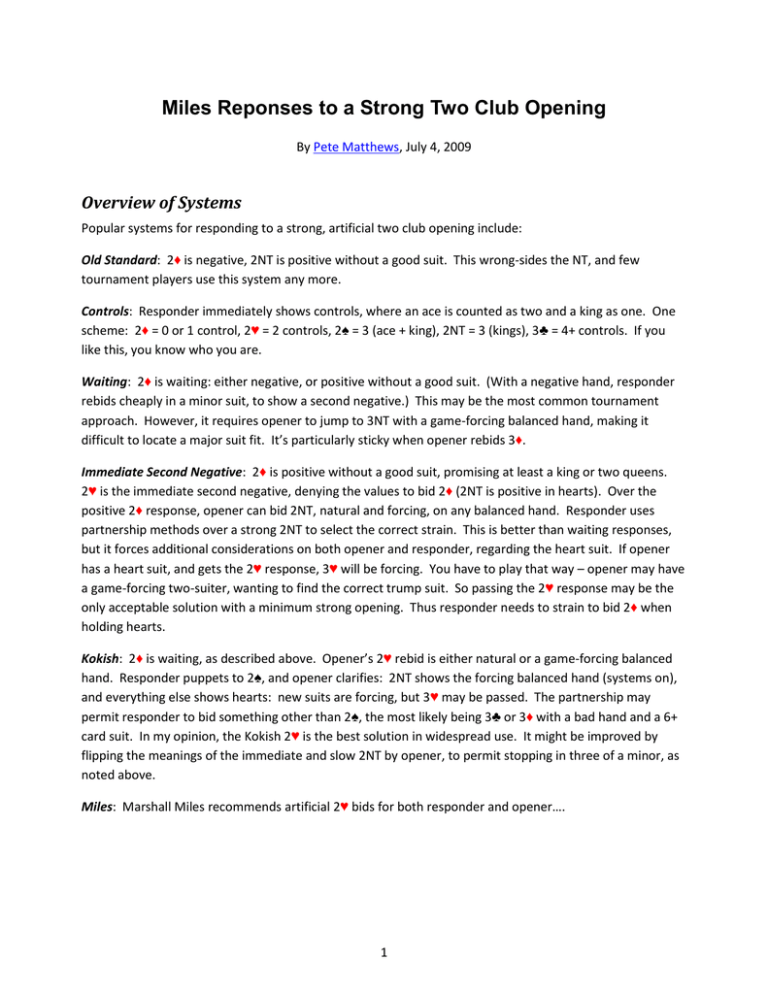
Miles Reponses to a Strong Two Club Opening By Pete Matthews, July 4, 2009 Overview of Systems Popular systems for responding to a strong, artificial two club opening include: Old Standard: 2♦ is negative, 2NT is positive without a good suit. This wrong-sides the NT, and few tournament players use this system any more. Controls: Responder immediately shows controls, where an ace is counted as two and a king as one. One scheme: 2♦ = 0 or 1 control, 2♥ = 2 controls, 2♠ = 3 (ace + king), 2NT = 3 (kings), 3♣ = 4+ controls. If you like this, you know who you are. Waiting: 2♦ is waiting: either negative, or positive without a good suit. (With a negative hand, responder rebids cheaply in a minor suit, to show a second negative.) This may be the most common tournament approach. However, it requires opener to jump to 3NT with a game-forcing balanced hand, making it difficult to locate a major suit fit. It’s particularly sticky when opener rebids 3♦. Immediate Second Negative: 2♦ is positive without a good suit, promising at least a king or two queens. 2♥ is the immediate second negative, denying the values to bid 2♦ (2NT is positive in hearts). Over the positive 2♦ response, opener can bid 2NT, natural and forcing, on any balanced hand. Responder uses partnership methods over a strong 2NT to select the correct strain. This is better than waiting responses, but it forces additional considerations on both opener and responder, regarding the heart suit. If opener has a heart suit, and gets the 2♥ response, 3♥ will be forcing. You have to play that way – opener may have a game-forcing two-suiter, wanting to find the correct trump suit. So passing the 2♥ response may be the only acceptable solution with a minimum strong opening. Thus responder needs to strain to bid 2♦ when holding hearts. Kokish: 2♦ is waiting, as described above. Opener’s 2♥ rebid is either natural or a game-forcing balanced hand. Responder puppets to 2♠, and opener clarifies: 2NT shows the forcing balanced hand (systems on), and everything else shows hearts: new suits are forcing, but 3♥ may be passed. The partnership may permit responder to bid something other than 2♠, the most likely being 3♣ or 3♦ with a bad hand and a 6+ card suit. In my opinion, the Kokish 2♥ is the best solution in widespread use. It might be improved by flipping the meanings of the immediate and slow 2NT by opener, to permit stopping in three of a minor, as noted above. Miles: Marshall Miles recommends artificial 2♥ bids for both responder and opener…. 1 Breakthrough by Marshall Miles In Modern Constructive Bidding, Marshall Miles describes his methods, which combine an artificial positive 2♥ response and the Kokish 2♥ by opener. This structure provides a solid foundation for further agreements to cover a wide variety of hands. Miles, of course, has a full system, but you don’t need to play it all. Here it is: 2♦ Artificial negative response, denies holding two kings, 7 points including an ace, or 8 points including a king. 2♥ by opener is then Kokish, as described above. 2♥ Artificial positive response, lacking an acceptable long suit. As an example, this guarantee of strength may permit opener to introduce a five card suit that might produce a slam, instead of just rebidding 2NT. 2♠ Positive response, ♠QTxxx or better, or any 6-card spade suit. The suit quality requirements for a positive response in spades are a little less than for other suits, because this bid cannot pre-empt partner. 2NT Positive response in hearts. 3♣/3♦ Positive response in clubs/diamonds. 3♥/3♠ Optional: a 6+ card suit headed by two of the top three honors. This is a mixed blessing, because it may pre-empt opener from showing his suit(s). 3NT Shows a completely solid suit, AKQJxx, AKQxxxx, or better. Opener’s suit bid at the 4-level asks for control in that suit, by steps, skipping NT: 1 = none, 2 = singleton, 3 = ace or void, NT = king. 4♣/4♦/4♥/4♠ A transfer to the suit above, showing a one-loser suit missing the ace or king. A new suit by opener is an asking bid as over a 3NT response. Historically, a positive response in a suit has promised two of the top three honors. With the availability of keycard asking bids, Miles says any 6-card suit is acceptable for a positive response, given enough overall strength. Miles recommends second-round splinters by the 2♦ or 2♥ responder. Note that the limit on the 2♦ responder’s hand will reduce the risk of going overboard with a splinter, compared to playing an unlimited waiting 2♦. Because a balanced opener has no need to jump in NT over the 2♦ response, opener’s jump rebid of 3NT shows a long, solid minor with all suits stopped – 8 certain tricks and a likely ninth. If opener jumps in a suit, he sets trumps and starts a slam inquiry. Counting the king of trumps as an ace, responder bids an ace, if he has one, or jumps in the cheapest ace with two or more. With no ace, but one or more kings, responder bids NT; with no aces or kings, responder raises trumps. Opener can then bid a suit to ask about that king, or 5NT to ask for clarification of multiple aces. Reference: Modern Constructive Bidding, Marshall Miles, pages 91-96. This is an excellent book – you may preview most of the first 50 pages at Google Books. 2
